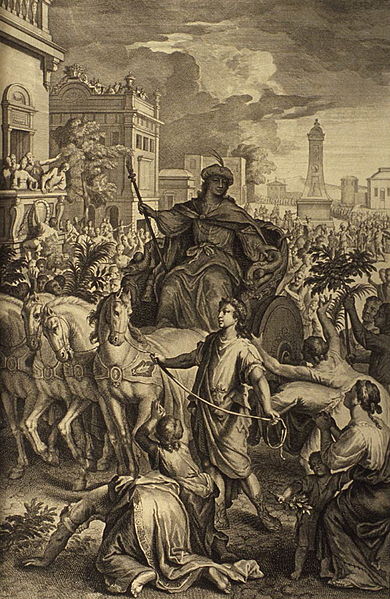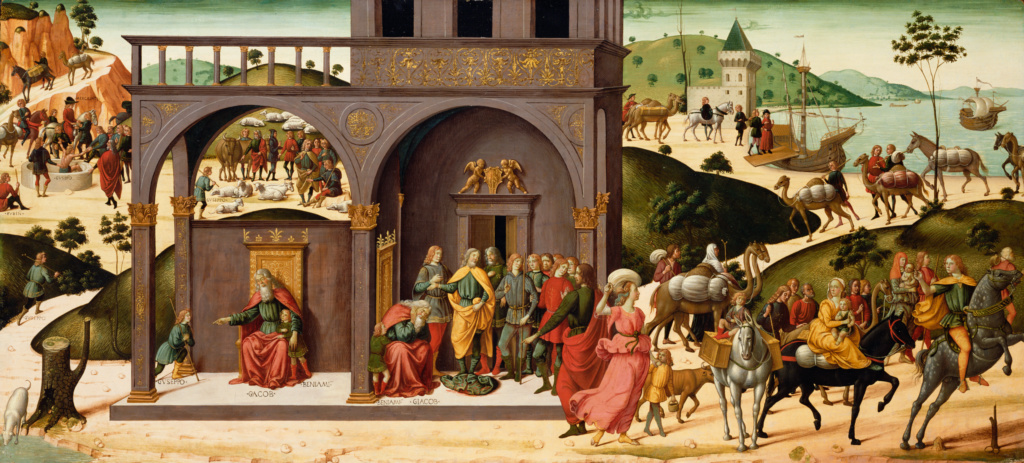A Christological Figure

Joseph, the Old Testament patriarch, is one of the most important characters in the book of Genesis with one of the most memorable stories within the entirety of Scripture. His dramatic narrative, which includes a beautiful coat, jealous half-brothers, false accusations of adultery, jail time, dream interpretation, famine, and revealed identities, is considered by many to be a story more finely woven and symbolic than many fictional pieces of literature.
When Genesis first introduces us to Joseph, he is living with his family in Canaan, the eleventh son of his father Jacob. What follows is the well-known tragedy of his elder siblings selling him into Egyptian slavery, his rising stardom in Potiphar’s house, and quick fall into prison. After his time in jail, Joseph again began to climb the ranks of Egyptian society, becoming the primary dream-interpreter for the pharaoh and being put in charge of the country’s storehouses.
Once famine takes over the region, Joseph’s brothers are sent from Canaan to Egypt to buy food. When he first encounters them after their years of separation, Joseph accuses his brothers of being spies and keeps his relationship to them a secret. It is only when they tell him about his younger brother Benjamin that Joseph demands that Benjamin also be brought to Egypt as a demonstration of the brothers’ earnestness and veracity.
After many twists and turns, Joseph reveals his identity to his family, forgives his brothers, and insists that they bring Jacob and the rest of his house to Egypt. His absolution to his brothers, “you meant evil against me, but God meant it for good” is some of the most moving words of the whole story and closely resembles Romans 8:28: “And we know that for those who love God all things work together for good.”
After the rest of Joseph’s family was brought to Egypt, Joseph remained in good favor with the Egyptian authorities and lived until the age of 110, telling his offspring that whenever the Israelites left Egypt, they should take his bones with them. This oath was remembered, and when the Israelites left Egypt during the Exodus, Moses brought Joseph’s bones with him to the Promised Land.
A Brief History
Although St. Joseph hasn’t always been part of the historic Lutheran calendar, we think that this day is a blessed addition to the liturgical year and one worth commemorating in your homes and churches.
After all, St. Joseph has always been significant to the story of the church, in part because he is a Christological figure. Foreshadowing the person of Christ, we first see in Joseph a man who was especially loved by his father, mocked by his family, sold for pieces of silver, stripped of his robe, falsely accused, faithful amid temptation, and exalted after his humiliation. Moreover, he fed the hungry and was an instrument that God used to bless his people.

It is for this reason that St. Joseph’s Day on March 31st gives us a prime opportunity to consider Joseph’s reflection of our Lord Jesus Christ and to remember how even Joseph’s magnificent story is overshadowed by “greatest story ever told.” Further, because St. Joseph’s Day always falls during either the Lent or Easter season, it is a great time to refamiliarize yourself with and teach others about the parallels between the two stories and to consider the way in which God used Joseph’s trials and suffering to yield great joy and reward.

Collect
O Almighty God, who hast knit together Thine elect in one communion and fellowship in the mystical body of Thy Son Jesus Christ, our Lord: grant us grace so to follow Thy blessed saints in all virtuous and godly living, that we may come to the unspeakable joys which Thou hast prepared for those who unfeignedly love Thee; through the same, Jesus Christ, Thy Son, our Lord, who liveth and reigneth with Thee and the Holy Ghost: ever one God, world without end. Amen.
Lessons
Resources

St. Joseph cabbage rolls
Issues, Etc. interview with the Rev. Dr. Kevin Golden on Old Testament Patriarch Joseph
Issues, Etc. interview with the Rev. Dr. Tom Egger on Joseph the Patriarch
Propers found in Daily Divine Service Book: A Lutheran Daily Missal, edited by the Rev. Heath Curtis
References:
1. Treasury of Daily Prayer. Concordia Publishing House. 2008.
2. Weedon, William. Celebrating the Saints. Concordia Publishing House. 2016.
Images:
1. Joseph Rides in a Chariot through Egypt, Gerard Hoet, The Netherlands, 1728..
2. Joseph and Potiphar’s Wife, Guido Reni, Italy, 1631.
3. The Story of Joseph, Biagio d’Antonio, Italy, 1485.
Some links might be affiliate links which means we may receive a small commission at no extra cost to you. As an Amazon Associate we earn from qualifying purchases.



